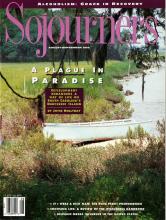The picture of a starving child is one of the most hopeless, disempowering images that possibly can be conveyed. Yet consistently this is the image that has come to represent the frequently famine-ridden Horn of Africa.
What the pictures don't tell you is that for every one of these children who is emaciated and victimized, there are three kids who are not. For every one camp of refugees, there are 10 villages where people are preserving their ways of life and trying to build for the future.
These are the best of times and the worst of times in the Horn of Africa, an area that includes Ethiopia, Eritrea, Sudan, Djibouti, Somalia, and the declared Republic of Somaliland (formerly northern Somalia). Two of the world's most brutal dictators have been overthrown in the past year and a half. Movements for self-determination have emerged, and one of the world's longest wars has ended. Local reconstruction has begun throughout the region.
Yet at the same time, 23 million people are at risk of starvation this year in the Horn. Hundreds of thousands more have taken refuge in northern Kenya in recent months due to continued fighting in southern parts of Somalia, Ethiopia, and Sudan. At least a hundred children are dying in these camps every day from malnutrition and related diseases.
Cycles of crisis could have been ameliorated if Horn governments had pursued more participatory political and economic policies. But certain factors have conspired to block the aspirations of Horn residents to move toward democracy and development.
War has been the primary cause of frustrated development. Externally supported dictators have created or inflamed local conflicts in classic divide-and-rule fashion. These dictators retained power by repressing rights and suppressing dissent, utilizing brutal methods.
Read the Full Article

